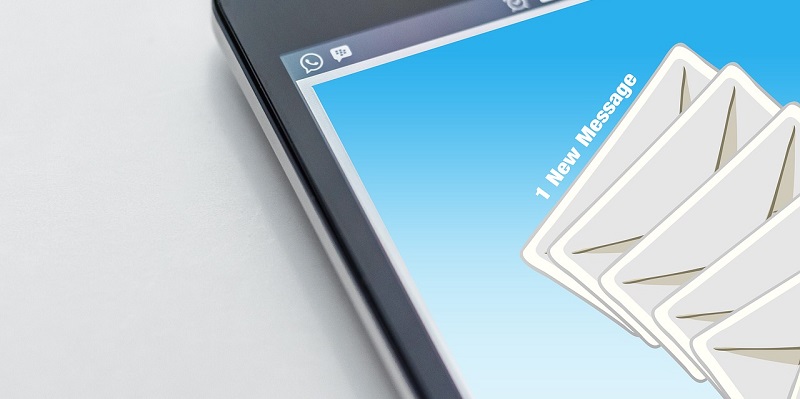In today’s highly competitive business landscape, B2B companies are continuously exploring innovative marketing channels to engage and convert potential clients. Amidst this digital revolution, email marketing has emerged as a potent and effective tool, allowing businesses to reach their target audience in a personalized and effective manner. In fact, a staggering 84% of B2B companies have integrated email marketing into their overall marketing strategy, with 29% ranking it as their most effective marketing channel. This article delves into the significance of email marketing and explores strategies to navigate challenges, optimize message delivery, and achieve success in B2B email campaigns.
The Importance of Email Marketing in B2B Companies
With the rise of digital marketing, email continues to be a dominant channel for engaging B2B audiences. It provides an avenue for businesses to establish and nurture relationships with prospects, share valuable content, and drive conversions. As statistics suggest, an overwhelming majority of B2B firms recognize the power of email marketing and have embraced this strategy to amplify their marketing efforts.
Challenges Faced in Email Marketing Due to Oversaturation
Despite its effectiveness, the email marketing landscape is becoming increasingly crowded, making it more challenging for businesses to stand out and capture the attention of their target audience. This saturation calls for astute planning and dedicated efforts to ensure that email campaigns remain engaging without overwhelming recipients. It necessitates striking the right balance between frequency, content relevance, and personalization to maximize impact.
Need for Concise and Easy-to-Understand Emails
In a world bombarded with countless emails, it is crucial for B2B marketers to create messages that are succinct, easily digestible, and compelling. Infusing clarity and brevity in email content captures the busy professional’s attention and encourages them to engage further. By providing value-driven, concise emails, businesses can elicit a positive response from their audience and increase the chances of click-throughs and conversions.
The Effectiveness of Using One Call-to-Action (CTA)
To optimize engagement in B2B emails, marketers should adopt a singular and well-placed call-to-action (CTA) that aligns with the email’s objective. Rather than overwhelming recipients with multiple CTAs, a focused approach directs attention and guides prospects towards the desired action. Streamlining the decision-making process through a well-crafted CTA can dramatically improve click-through rates and lead conversion.
The Role of Artificial Intelligence in Email Marketing
Artificial intelligence (AI) is revolutionizing marketing across industries, and B2B is no exception. AI-powered tools enable businesses to analyze vast amounts of data, segment their audience more effectively, and personalize email campaigns based on individual preferences and behaviors. By leveraging AI, B2B marketers can create hyper-targeted, dynamic content that resonates with recipients, leading to increased engagement and higher conversion rates.
The Benefits of List Segmentation for Targeted Advertising and Emails
List segmentation is a proven methodology that divides the target audience into smaller, more homogeneous groups based on specific characteristics or demographics. By tailoring messages to these segmented lists, businesses can deliver highly relevant and targeted content to individual prospects. This approach increases the chances of capturing attention, fostering deeper connections, and driving higher conversion rates.
The Evolving Concept of Personalization in B2B Marketing
While personalization has been a hot topic in B2B marketing for years, there is a growing need to take it a step further. Beyond addressing recipients by their names, B2B marketers are increasingly focusing on delivering personalized content that aligns with the specific pain points, challenges, or interests of each prospect. By leveraging data insights and crafting thoughtful personalization, businesses can build credibility, trust, and enhance customer experiences, ultimately leading to higher conversion rates.
The Significance of Clear Buyer Personas for Targeted Messaging
Having well-defined buyer personas plays a pivotal role in crafting successful B2B email campaigns. By understanding the characteristics, needs, and pain points of prospective clients, businesses can tailor messaging to resonate with their target audience. Clear buyer personas ensure that the right information is delivered to the right individuals, significantly improving open rates, click-through rates, and overall campaign effectiveness.
The Importance of Mobile Optimization for B2B Email Marketing
In today’s mobile-centric world, it is imperative for B2B marketers to optimize email campaigns for mobile devices. Research shows that 50% of B2B inquiries are made through smartphones, surpassing desktop usage. To ensure a seamless user experience, B2B emails should be designed responsively, adapting to various screen sizes and resolutions. This mobile optimization increases engagement and enables businesses to capture prospects on the go.
The Impact of Responsive Email Templates on Click Rates
Responsive and mobile-friendly email templates have the potential to boost click-through rates by up to 15%. By creating visually appealing and easily navigable templates that adapt to different devices, B2B marketers can effectively engage their audience on all platforms. This optimized user experience increases the chances of click-throughs, conversions, and ultimately, business success.
In the ever-evolving landscape of B2B marketing, email marketing remains a powerful strategy for engaging and converting prospects. However, to achieve success in this oversaturated digital environment, marketers must strive for concise and easy-to-understand emails, leverage AI technologies, segment their lists, personalize messaging, optimize for mobile, and utilize responsive email templates. By implementing these strategies, B2B businesses can effectively navigate the challenges of email marketing and cultivate meaningful connections that drive growth and success.

